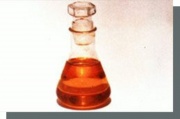Difference between revisions of "Ajowan oil"
Jump to navigation
Jump to search
m (Text replace - "== Authority ==" to "== Sources Checked for Data in Record ==") |
|||
| (One intermediate revision by the same user not shown) | |||
| Line 8: | Line 8: | ||
ptychotis oil; ajava oil | ptychotis oil; ajava oil | ||
| − | == | + | == Physical and Chemical Properties == |
| − | Soluble in ethanol and ether. | + | * Soluble in ethanol and ether. |
| + | * Density = 0.90-0.93 g/ml | ||
| − | + | ==Resources and Citations== | |
| − | |||
| − | |||
| − | |||
| − | |||
| − | |||
| − | |||
* G.S.Brady, ''Materials Handbook'', McGraw-Hill Book Co., New York, 1971 Comment: p. 22 | * G.S.Brady, ''Materials Handbook'', McGraw-Hill Book Co., New York, 1971 Comment: p. 22 | ||
Latest revision as of 07:56, 25 April 2022
Description
An essential oil with a thyme-like odor distilled from the fruits of the Carum copticum or Ptycholis agowan trees that are native to India, Egypt, Iran, and Afghanistan. The oil is primarily used to produce Thymol, but it also has been used as an Insecticide, and bactericide.
Synonyms and Related Terms
ptychotis oil; ajava oil
Physical and Chemical Properties
- Soluble in ethanol and ether.
- Density = 0.90-0.93 g/ml
Resources and Citations
- G.S.Brady, Materials Handbook, McGraw-Hill Book Co., New York, 1971 Comment: p. 22
